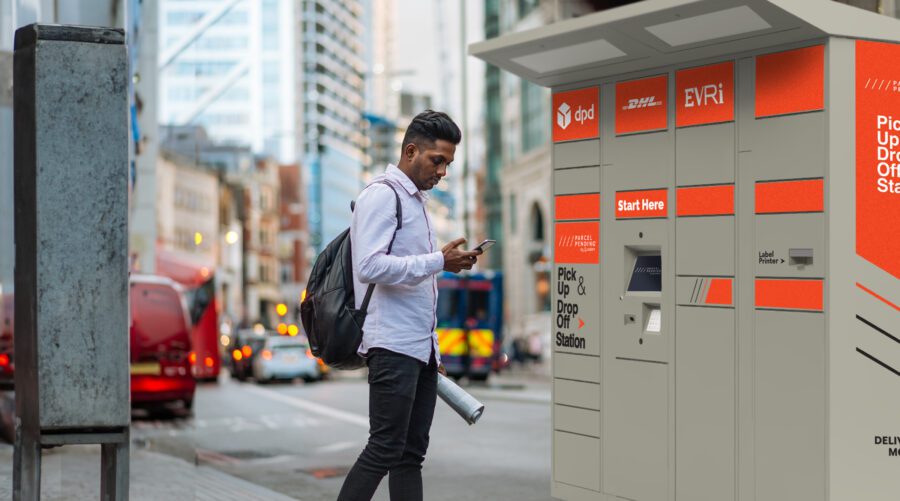
University
7 Eye-Opening Tech-Enabled Student Housing Amenities
Written by: Parcel Pending
9 Min Read
Published: April 8, 2020
Updated: April 3, 2023
In recent years, colleges have devoted substantial parts of their budget towards updating or otherwise improving their on-campus student housing and community amenities. In order to attract prospective students, many universities have opted for updated common areas and tech-enabled amenities that, until recently, might seem over the top. However, in light of increased competition in the marketplace, these amenity offerings can have a large impact on both enrollment and student satisfaction.
In the United States, many colleges are privately owned and operated. As such, they need to continuously attract new students while retaining their current enrollees. And in today’s in today’s competitive environment, student housing amenities matter for new students – especially freshmen.
Curious what actions other colleges are taking to craft a safe, modern student living experience? Check out these 7 tech-enabled student housing amenities to see how and why they resonate with current and prospective students.
The Best Tech-Enabled Student Housing Amenities for Your Campus
Student housing has changed dramatically in recent years. What used to be squat, spartan, buildings crammed with three students to a room have evolved into accommodations more reflective of a hotel or a luxury apartment rather than military barracks. According to Multifamily Executive:
Apartment size is a significant driver behind student housing decisions, ranking as “extremely important” by 65 percent of survey respondents. For the most part, students show a preference for living in either a mid-rise building (38 percent) or a community cottage or townhouse (33 percent). Only 13 percent would most like to live in a single-family home, with an even smaller portion (9 percent) preferring a high-rise. Only 7 percent said they’d prefer micro units.
This preference has been reflected in terms of design and layout, particularly in new dormitories and student apartments. But besides size and space, what are amenities that prospective college students want? But besides size and space, what are amenities that college students want?
Wi-Fi or 5G Connectivity
There are few things as regularly noted as a top priority for young people than a strong Wi-Fi signal, making this less of an amenity and more of a necessity for any college student. From laptops, to their cellphones, to other electronic devices, just about everything they care about nowadays runs on it. Consider all of the activities a student might need high-speed internet access for:
- Doing homework
- Participating in online classes or lectures
- Connecting with friends or family on social media or via video call services
- Downloading movies, music, and videos
- Playing video games
- Watching various media via streaming services
Plus, most every student will have multiple devices. Among the things college students want most include accessing the internet wherever they may be (from their dorm room to the computer lab, study lounge or building fitness center). This means that your campus’ Wi-Fi infrastructure needs to be set up to handle a high volume of regular users. Multifamily Executive writes:
“The most important thing in student housing has become the Internet. And the second-most important thing is the Internet and the third most-important thing is the Internet.”
Knowing this, many campuses have proactively upgraded their Wi-Fi network, signed up for a premium bandwidth, or worked with networks to install high-speed internet and 4G LTE or even 5G services.
Digital Fitness Centers
In response to some alarming mental health trends (particularly for Gen Z), many colleges have placed special emphasis on the importance of physical and mental health of their student body as they prepare to return to campus in the fall. They believe that focusing on this will help students manage the stresses of college life and help improve their academic performance.
While most every campus typically invests in a primary gym and/or rec center, a new tech-centric approach that many schools are turning to is smaller, cutting-edge fitness centers in each dormitory. These community amenities can be used for a variety of fitness-related purposes, with the most common applications including:
- Yoga studios
- Peloton and/or spin rooms
- Kickboxing
- Pilates
In an effort to improve and digitize health and fitness facilities in college campus settings, these fitness centers use on-demand video technology with TVs or projection screens that allow students to select a workout and start sweating. By providing a convenient option (particularly for busy students), campuses are able to help reduce traffic in the main gym where most cardio machines and weights are located.
Smart Parcel Lockers
While most university mailrooms are capable of handling the various letters, bills, magazines, etc. that students receive daily, many are not equipped to manage the growing influx of student, staff, and faculty packages. This overflow has resulted in the following issues:
- Unorganized stacks of packages filling up the mailroom or student mail services center—leading to potential loss, damage, or theft.
- Hours of time spent by mail services staff accepting, sorting, storing and/or delivering packages.
- An inefficient student internet package pick-up system with limited hours, which can often require students to wait in crowded lines to retrieve their deliveries.
Seeing that this problem was only getting worse, many colleges turned to the obvious solution: intelligent parcel locker systems, like the ones offered by Parcel Pending by Quadient.
Parcel Pending by Quadient smart lockers have a built-in tracking system to help mail centers around the world reduce operational expenses and streamline the parcel distribution process:
- Chain-of-Custody Tracking – Full chain-of-custody via a single cloud-based system that tracks all goods and assets – even those that do not go in a locker – received and distributed throughout campus; this includes large items, high-value items, and more.
- Mail Distribution – Distribute student, staff, and faculty mail on a single communication platform.
- Streamlined – Ability for the system to talk to other software already on campus so that other departments like the library, bookstore, IT department, cafeteria/dining hall, and more can easily plug in; additionally, other departments can tap into the system for their own needs while ensuring the process remains the same for students and staff.
- Flexible – Tailored options to meet the specific space and goods receiving and distribution needs of any size college or university.
- Versatile – Multiple configurations and locker sizes available to allow for 100% deliverability.
- Advanced – Flexible API allows for seamless integration with most asset tracking software systems.
- Contactless – Access deliveries by scanning a barcode or pushing a button on Parcel Pending’s mobile app to enable package pickup without having to use the locker kiosk touchscreen.
- Accessible – These self-service smart lockers are an amenity that can be used to pick-up or return goods and assets on-campus 24/7 – at the recipient’s convenience.
- Smart – Infrared scanners that sort and detect packages in each locker.
- Secure – Photo capture and optional 24/7 cloud-based video surveillance monitors all drop-offs and pickups; signature-required feature available.
- Fast – Barcode capture enables rapid package delivery.
- Mobile-Friendly – Students receive instant delivery notifications via text or email.
- Customizable – Wraps, colors, and tailored designs to match school colors, mascots, or campus settings.
- Efficient – Streamlines the student mail and package delivery process; flexible solutions reduce the space needed to accept, sort, and fulfill deliveries.
Tech-Centric Study Rooms
Students need a perfect place where they can work — either in groups or as individuals — free from distraction. Common rooms or dorm rooms are often filled with interruptions, which is why universities have made a concerted effort to not only add a study lounge or individual study rooms to campus housing, but to add smart features that improve learning, collaboration, and focus. Here are a few examples of technology that is often included in these spaces:
- Sound proofing
- Desktop computer systems that students can use
- Printers and other office supplies
- Smartboards for collaboration
By including all of these features in a study space, institutions can help contribute to an environment that fosters scholarship – and can even help promote schools.
Modern Laundry Facilities
For years, there were few things that students disliked more than doing laundry. They’d either wait until they could go home or wear everything they owned until they were forced to take action. It makes sense why students viewed university laundry services unfavorably, especially since the campus housing community laundry facilities typically included:
- Expensive, coin-only units
- A limited number of washers and dryers
- Students who left their items in the machines well after their laundry load was finished
- Significant opportunity for their clothes to be moved without permission or even stolen
- Only moderately functional washers or dryers
Today, however, student housing operators are leveraging new technology in order to optimize this oft-hated task. As Nxtbook writes:
ESU decided it would turn to technology that students were quite familiar with: an app. Utilizing networking that links all machines and sends information to the cloud, the app allows students to not only check machine availability, but also to see where washers and dryers were in the cycle; the app also alerts them when their loads are nearing the end of their cycle.
Smart washers and dryers can help greatly improve the student laundry experience, by optimizing the entire process, resulting in positive feedback from students and housing staff alike. And although this may seem like a small change, an upgrade like this can be a major draw for prospective students.
Keyless Room Entry
Keys are a hassle. And while they worked at one point, individually keyed bedrooms are becoming obsolete in the digital age. Now, a growing number of universities are turning towards systems that utilize fobs, student IDs, or smartphones to allow students to gain access to their residence hall and unlock their door. As American School and University puts it:
For many years, the solution to this problem [lost keys] has been keyless access-control systems that use swipe or contactless cards to allow authorized users into a campus facility. As technology improves and card systems can be equipped with more functions, the appeal of card-based access-control systems has grown for administrators and facility managers.
These systems increase security and accountability, as well as prevent attempted break-ins from simply copying a key and using that to illegitimately gain entry.
Green Technologies
When Gen Z goes to college, they are often more environmentally conscious than any previous generation. They care deeply about their ecological impact and their energy consumption. As such, they also want to live in a place that shares their eco-friendly principles. According to U.S. News:
Increasingly, as universities are seeing more student demand for such programs [environmental studies], they are acknowledging that this is part of their obligation as the entity that is preparing students for success in the future… In addition to curbing carbon emissions, some schools have seen environmental interest and activism translate into initiatives to ban plastic water bottles and build or refurbish campus buildings so that they are LEED certified. LEED stands for Leadership in Energy and Environmental Design, meaning facilities have met certain energy-efficiency requirements.
A growing number of colleges are turning to green technologies in dorms or student apartments to increase sustainability, such as:
- Solar panels
- Energy smart appliances
- LED lighting
- Low-flow showerheads and toilets
- Retrofitting buildings’ heating and AC
Universities understand that the upfront dorm and apartment investments will not only teach students about conservation but will also make an impact on the university’s carbon footprint.
Improving Student Housing
From smart lockers to digital fitness centers, there are a host of student housing amenities that can improve student living. By investing in new amenity offerings where students spend a majority of their time, colleges can demonstrate that they care about their students’ academic, emotional, and physical well-being. And if current trends in college student housing are any indicator, technological upgrades are only beginning. Moving forward, high-tech, luxury amenities will likely become the norm — not the exception.
Sources:
- Batdorf, Joseph. Multifamily Executive. Survey Says: The Top Student Housing Common-Areas and Amenities. (2013, August 5). https://www.multifamilyexecutive.com/property-management/apartment-trends/survey-says-the-top-student-housing-common-areas-and-amenities_o.
- Devon, Kayla. Multifamily Executive. Head of the Class: 5 Key Student Housing Amenities. (2014, November 11). https://www.multifamilyexecutive.com/technology/high-end-student-housing-amenities-just-expected_o.
- Radtke, Randy. “Laundry Revolution”. Talking Stick, vol. 36, no. 6, July/August 2019, pp. 13. http://read.nxtbook.com/acuho/talking_stick/july_august_2019/laundry_revolution.html.
- Kennedy, Mike. American School & University. Keyless Access. (2009, April 1). https://www.asumag.com/safety-security/access-control-visitor-management/article/20850602/keyless-access.
- Murtagh, Alison. U.S. News & World Report. Why College Campuses Are Going Green. (2019, September 17). https://www.usnews.com/education/best-colleges/articles/2019-09-17/why-college-campuses-are-going-green.



